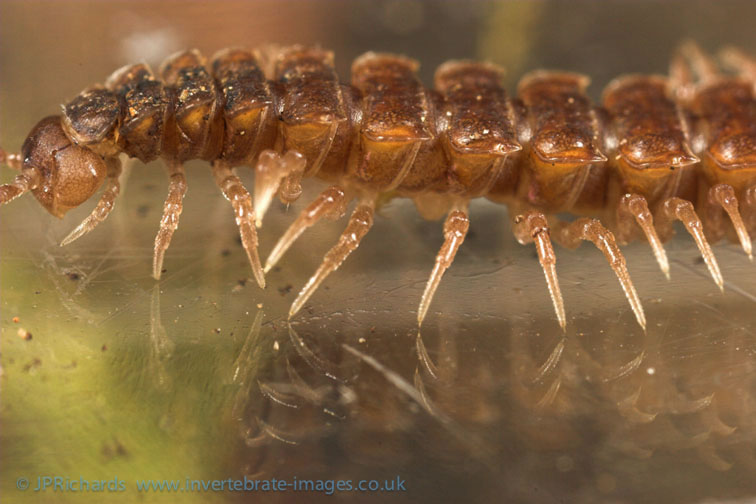Polydesmus angustus Latzel, 1884
Status:
GB IUCN status: Least Concern
ID Difficulty
Identification
It is not possible to reliably identify Polydesmus millipedes without examination of male gonopods or female epigynal structures. Immatures cannot be identified.
Care needs to be taking to separate this common species from other widespread species such as Polydesmus coriaceus, Polydesmus denticulatus and Polydesmus inconstans.
Distribution
This is a common and widespread species in Britain and Ireland.
Polydesmus angustus has an extended Atlantic distribution, occurring as far east as Austria and the Czech Republic (Kime, 2004). It has been introduced to North America and Mexico (Blower, 1985).
Habitat
It is very catholic in its requirements and is found in almost any habitat where millipedes occur. Many continental authors have reported it as a typical woodland animal (Haacker, 1968; Jeekel, 2001; Kime, 2001; Schubart, 1934) and it occurs frequently in British and Irish woodlands. However, analysis of the recording scheme habitat data suggests a strong association with heath / moorland. It is the most frequently recorded species in this habitat which may explain an apparent association with peat soils. It may also account for a strong association with non-calcareous soils, something noted by Gregory and Campbell (1996) in Oxfordshire and by Kime (2004) in Belgium. However, Jeekel (2001) reported the species as occurring commonly on limestone in the Netherlands. He also found it frequently on clay but Kime and Wauthy (1984) linked it to soils with low clay content. In Britain and Ireland it has been recorded most frequently (45% of records) from loams. This contradictory information on soil preference probably reflects the eurytopic nature of the species.
Phenology
Work on a closely related species suggests animals probably take 30 to 36 months to reach maturity (Verhoeff, 1928). Both sexes die after reproduction, hence adults are scarce over the summer. However, there are some records of adults from all months of the year.
This species account is based on Lee (2006).
Links
MilliBase - Global catalogue of Millipedes: https://millibase.org/aphia.php?p=taxdetails&id=943709








